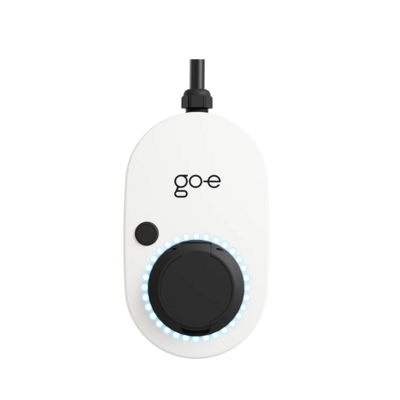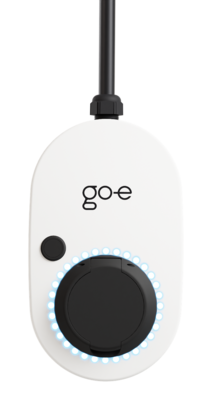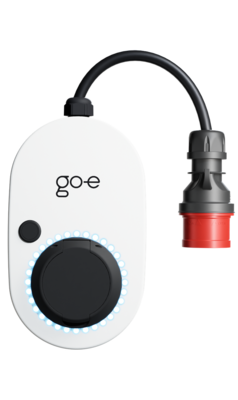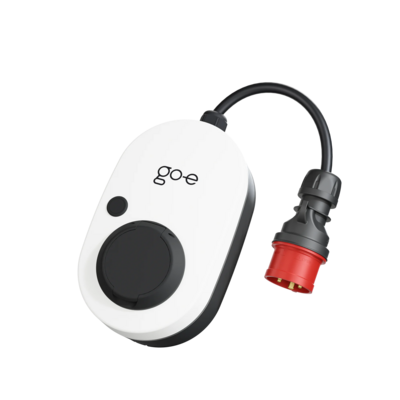Mobile or Stationary Wallbox: Which One Do You Need?
Last updated:
Have you ever been struggling to make a choice between two products? It can be a real headache if the difference between them isn’t clear. We know it feels sometimes like that for EV drivers making a choice between a mobile and stationary wallbox. So if you are asking yourself what the benefits of each option are and which is the way to go for you, follow us to find out.
What’s the Difference Between a Mobile and a Stationary Wallbox?
A stationary wallbox is installed in a fixed location, such as your garage. It is wired into your house mains supply and is meant for AC charging.
A mobile wallbox, on the other hand, can be attached to the wall, but doesn’t have to be. You can take it off at any moment, put it in your car and go on a trip, being able to charge your vehicle as soon as you find an available socket. What socket? We’ll discuss it later. Right after it is plugged in, energy will start flowing into your vehicle’s battery unless you change the settings to a different mode. The wallbox is suitable for AC charging only.
Wallbox, charging station and smart charging cable - What’s the difference?
Mobile wallboxes, charging stations, smart charging cables… The number of terms is pretty overwhelming. And all you really want is to find a convenient way to charge your electric car. Is that too much to ask for?
Let us explain it to you in a nutshell.
Mobile wallbox and mobile charging station can mean the same thing. Meanwhile, a mobile wallbox can be just as advanced, and sometimes more so, than a stationary charging station. One such case is the go-e Charger Gemini flex. It is a mobile wallbox, but it has more smart features than basic and many other smart wallboxes and charging stations.
go-e Charger Gemini 11 kW

The compact wallbox for stationary use, at home or at the workplace. Simple installation, intuitive operation and smart comfort functions. Charging power from 1.4 kW to 11 kW. 1-phase or 3-phase charging.
go-e Charger Gemini 22 kW

The compact wallbox for stationary use, at home or at the workplace. Simple installation, intuitive operation and smart comfort functions. Charging power from 1.4 kW to 22 kW. 1-phase or 3-phase charging.
go-e Charger Gemini flex 11 kW

The intelligent wallbox can be used both stationary in the wall bracket and mobile. No electrician is required for the installation of the charging station. Charging power from 1.4 kW to 11 kW. 1-phase or 3-phase charging.
go-e Charger Gemini flex 22 kW

The intelligent wallbox can be used both stationary in the wall bracket and mobile. No electrician is required for the installation of the charging station. Charging power from 1.4 kW to 22 kW. 1-phase or 3-phase charging.
However, some manufacturers offering a simple charging cable with a small In-Cable Control Box (ICCB) in the middle, a type 2 cable on one side and a plug for a socket on the other side, call their devices a mobile wallbox. Technically, it might be correct. Even though they usually cannot be used in a wall mount like a stationary wallbox. However, such a cable often does not provide you with smart features such as surplus solar charging, charge scheduling or flexible energy tariffs. It also lacks the convenience of a charging station. It therefore does not generally enable sustainable and cost-efficient charging. Many ICCB cables focus on minimum standards like every charging station ensuring safety of the charging process.
As you see, it’s vital to know the difference between all the terms before making the final purchase decision.
Which Wallbox Do You Need? A Mobile or a Stationary One?
Which wallbox is the right one for you depends on your charging behaviour and needs.
A Mobile Wallbox for More Flexibility - At Home and On The Road
You can take a mobile wallbox with you when you are going to spend a weekend in the countryside or visit your friends for a couple of days.
A mobile wallbox makes you always ready for the next adventure. Imagine you wake up on a Saturday morning and decide this weekend is perfect to spend on the countryside in your holiday house. As you pack your things planning to take off in the next hour, you realise that your car’s battery is low. But this doesn’t add a drop of worries to your thoughts. You simply unplug your mobile charger from the wall, put it in your car's trunk, and head out for a stress-free weekend, knowing you can charge your battery as soon as you arrive at your destination. That’s the comfort you receive when purchasing a mobile wallbox.
How to use a mobile wallbox?
As mentioned before, you can attach a mobile wallbox, like the go-e Charger Gemini flex, to the wall (e.g. in your garage) or take it with you in your electric car and go on a trip. You simply need a red CEE socket.
Having a red CEE socket at your place is important for regular use of your mobile wallbox. Why is that? Simply because it can deliver energy at much higher speed (e.g. at 11 kW).
Additionally, if you plan to take your mobile wallbox on a trip or to a holiday home, an adapter can be used to connect it to a camping plug or a household socket, providing you with flexible charging options.* The charging speed will be lower in these cases, but you will still be able to supply your vehicle with a certain amount of power to continue your journey.
* Electric vehicle charging adapters are not permitted for use in the United Kingdom and Switzerland in accordance with the national regulations.
A Stationary Wallbox for at Home or Your Workplace
A stationary wallbox is great for you if you are going to use it at one place only (e.g. at home or in the office).
In addition, when using a mobile wallbox, it is important to have a CEE red socket available for regular use. If you don’t have one, a stationary wallbox such as the go-e Charger Gemini can be purchased as an alternative solution. However, it may be easier to install a red CEE socket. This way, you also get the advantage of flexibility.
How to Use a Stationary Wallbox?
A stationary wallbox is a fixed solution for charging your electric car. It is going to stay on the wall permanently once it has been installed. You need an electrician to install the stationary wallbox as it should be wired into your home mains supply.
Some stationary wallboxes come with an attached charging cable and some require you to buy one separately as they are equipped with a type 2 socket. We at go-e believe the second option provides you with more flexibility as you can choose the length and design of the cable yourself. In addition, you can use it to charge your electric car at public charging stations.
Note: It's time to bust the myth that stationary EV home wallboxes are always faster than their mobile counterparts. For instance, our go-e Chargers 11 kW and 22 kW are available in both installation variants and have the same maximum charging speed capabilities.
How Much Does a Wallbox Cost: Mobile vs Stationary Wallbox?
When it comes to purchasing a wallbox for an electric vehicle, the cost may not differ much between a stationary and a mobile version from the same manufacturer. For instance, our go-e Charger Gemini and go-e Charger Gemini flex are priced the same, so choosing between a stationary and a mobile version is simply a matter of personal preference.
However, it's worth noting that some manufacturers may charge a slightly higher cost for their mobile wallbox options, as they sometimes come with added features.
Smart wallboxes (highly recommended) typically have a starting price of around 600 to 700 €. You can find more expensive options, but high price doesn’t always mean high quality. For example, our go-e Charger HOMEfix, the predecessor model of the go-e Charger Gemini flex, was identified in the ADAC test as the best and most affordable wallbox of 2022.
Summary
Ultimately, the choice between a mobile and stationary wallbox will depend on your individual needs and circumstances. If you have a dedicated parking spot and don't frequently travel long distances, a stationary wallbox may be the better option. However, if you're on the go from time to time and need the flexibility to charge at different locations, a mobile wallbox with smart functionality may be the right solution. This way, you can also visit your friends or family and charge at their place with no urgency to look for a public charging station.


